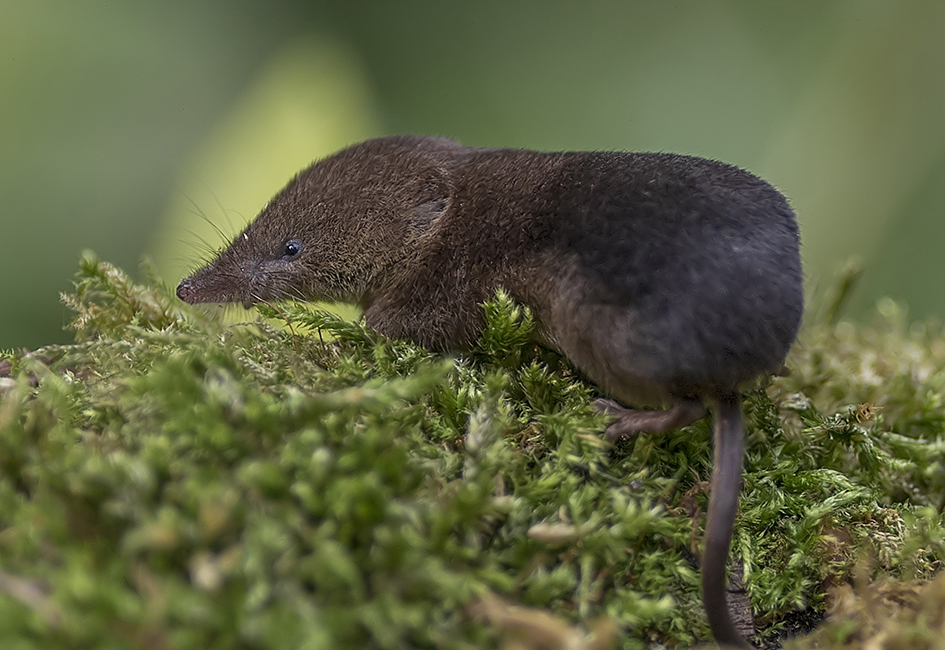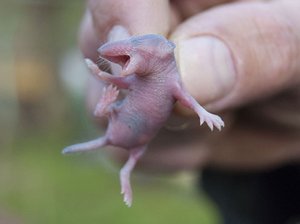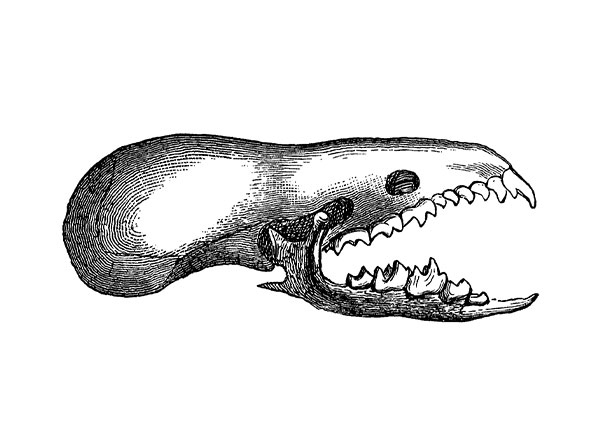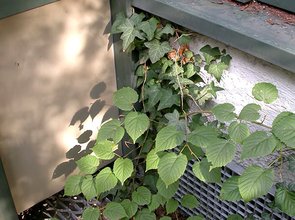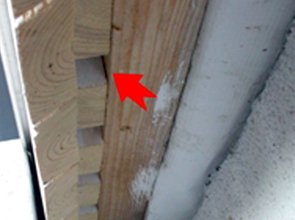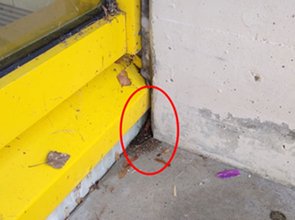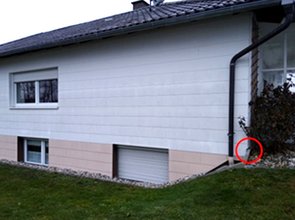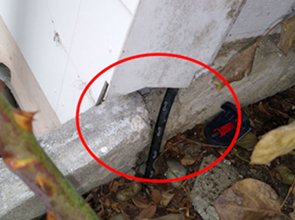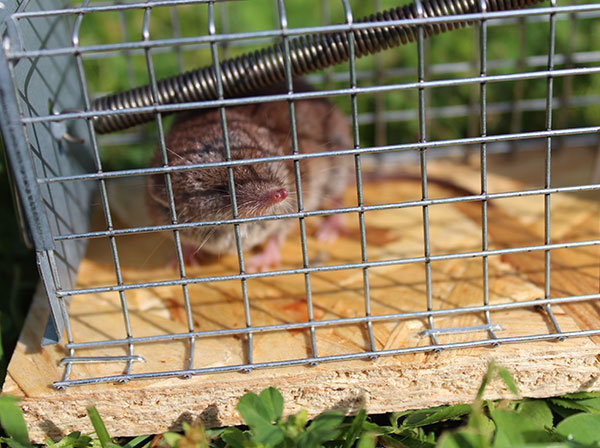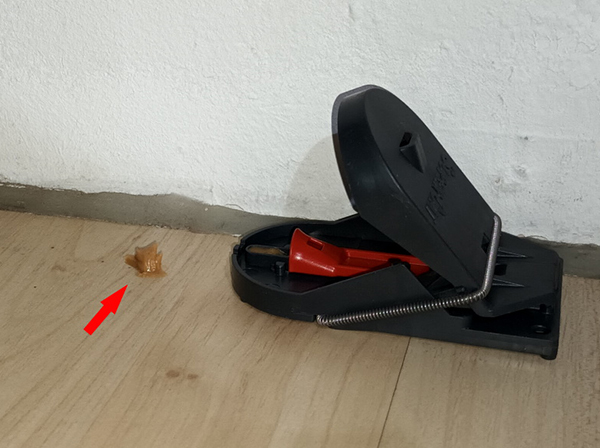Shrews are among the smallest vertebrates or mammals. They are not actually mice, nor are they rodents. They are fierce predators comparable to bears or martens, only much smaller.
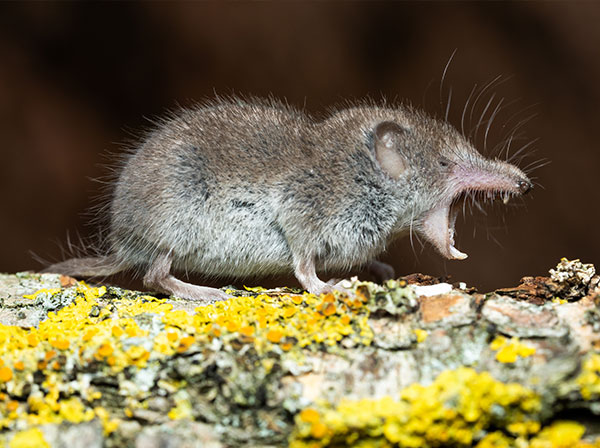
Angry shrew
Shrews are not very good climbers and move mostly on the ground.
Shrews are grumpy loners who only make contact with their peers during the mating season. They live in their own territory, which they mark with musky glandular secretions. The territories are 500 to 2000 m² in size.
Cats will hunt and kill shrews but will not eat them because of their musky odour and pungent taste. The smell is also clearly perceptible to humans. Birds are not bothered by the smell of shrews but like to catch and eat them.

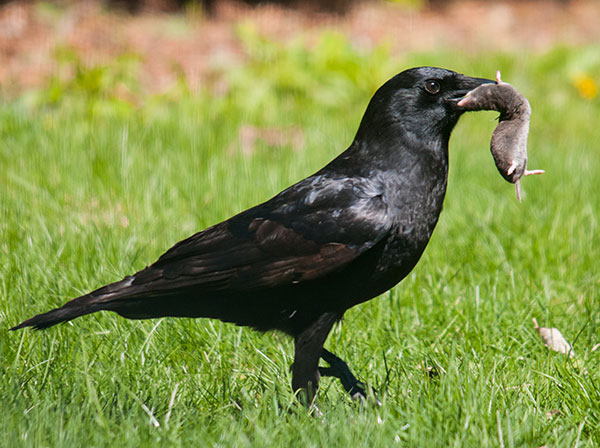
A cat playing with a dead shrew. Crow with shrew
The organism of shrews runs at full speed. Under stress, their heartbeat can increase to 1200 times per minute. They must go in search of food every 1 to 2 hours and are therefore diurnal and nocturnal. These circumstances make it difficult to catch the shrews with live traps!
Outdoors, nests are built in crevices, burrows, or under rootstocks. In some cases, passages are also taken over by moles or voles. The spherical nests are built from shredded leaves and grass.
Shrew families form caravans in which the shrew at the back bites the fur next to the base of the tail of the shrew in the front. The mother animal is at the very front. With this behaviour, stray young animals are brought back to the nest or the entire family moves quickly and safely to another place in this way. This behaviour is specifically taught to the young by the mother. The female runs over to the young animal and then stops in front of it so that it attaches itself. Young animals that do not attach themselves are transported quite roughly by mouth. As the young become more experienced, loose contact by using the snout or whiskers to the back of the shrew in front, without biting, is enough to form a row. Caravans can also be formed in two or three rows, or young animals can also form such caravans without their mother.
Shrews don't see very well, but they do have a highly developed sense of smell and can hear sound well into the ultrasonic range. Like bats, they can use echolocation to perceive their surroundings.

Typical position of the shrew to explore its surroundings. The nose "sees" more than the eyes.


![[Translate to Svenska:] [Translate to Svenska:]](/files/pics/7/2/csm_Mouse__860x586px_4295e63b71.jpg)

![[Translate to Svenska:] Ratten [Translate to Svenska:] Ratten](/files/pics/0/9/csm_Rat__860x586px_e3e988d139.jpg)
![[Translate to Svenska:] Maulwurf [Translate to Svenska:] Maulwurf](/files/pics/2/e/csm_Mole__860x586px_d43e7e8948.jpg)
![[Translate to Svenska:] indian-meal moth on oatmeal [Translate to Svenska:] indian-meal moth on oatmeal](/files/pics/b/6/csm_indian-meal-moth-on-oatmeal_low_659108f917.jpg)
![[Translate to Svenska:] Schnecken [Translate to Svenska:] Schnecken](/files/pics/5/f/csm_Slug__860x586px_da4b2d7f83.jpg)
![[Translate to Svenska:] Vogel [Translate to Svenska:] Vogel](/files/pics/8/9/csm_Bird__860x586px_273b7ffaf9.jpg)
![[Translate to Svenska:] Marder [Translate to Svenska:] Marder](/files/pics/d/6/csm_Marten__860x586px_7508da5714.jpg)
![[Translate to Svenska:] Fliege [Translate to Svenska:] Fliege](/files/pics/a/d/csm_Fly__860x586px_66c70bb32f.jpg)

